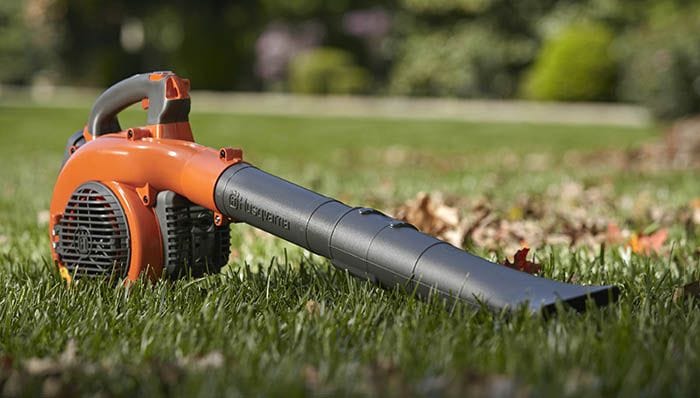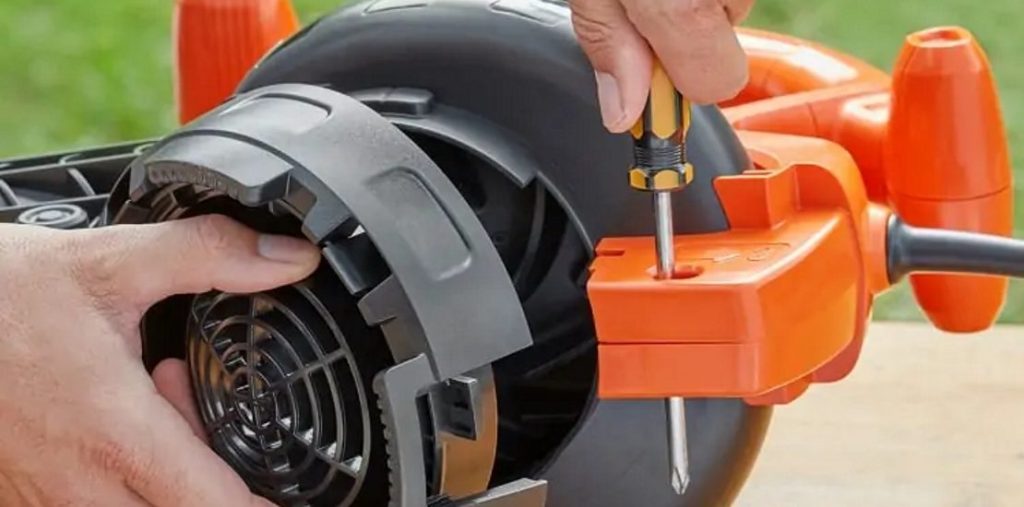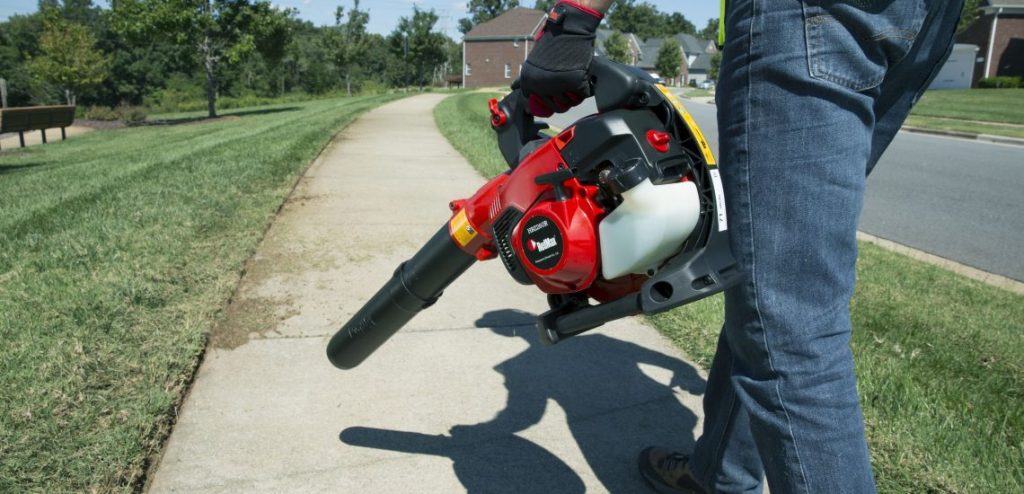Maintaining the performance and longevity of our leaf blowers is vital to ensure they continue to clear our yards effectively.
But have you ever wondered what specific maintenance tasks are necessary for these powerful machines?
This article will explore the essential maintenance steps required to keep your leaf blower running smoothly.
From cleaning the air filter to checking the spark plug, we’ll provide you with a comprehensive guide to keep your leaf blower in top-notch condition.
So, let’s roll up our sleeves and delve into the world of leaf blower maintenance!
Cleaning
Air filter
Cleaning the air filter is an essential maintenance task for your leaf blower. Over time, dirt, debris, and dust can accumulate in the air filter, reducing the airflow and performance of the blower. To clean the air filter, gently remove it from the blower and tap it lightly to remove any loose debris. If the filter is washable, rinse it with water and let it air dry completely before reinserting it into the leaf blower. However, replacing the filter with a new one is recommended if it is not washable.
Fan blades
The fan blades of your leaf blower play a crucial role in generating the necessary airflow. By regular cleaning and maintenance, you can ensure that the fan blades remain in good condition to blow away leaves and debris effectively. Disconnect the spark plug wire to clean the fan blades to ensure the blower is not accidentally started. Then, use a soft brush or cloth to remove dirt or debris from the fan blades. Be cautious not to damage the blades during the cleaning process, and once done, you can reconnect the spark plug wire.
Exterior
Keeping the exterior of your leaf blower clean not only enhances its appearance but also helps prevent dirt and debris from entering essential components. You can use a cloth or soft brush to clean the exterior to remove any dirt or debris accumulated on the blower’s surface. Pay attention to areas such as the handle, controls, and housing, as these are more prone to gathering grime. Regularly cleaning the exterior can maintain your leaf blower’s overall performance and longevity.
Fuel System
Fuel filter
The fuel filter prevents dirt and debris from entering the engine and causing damage or blockages in the fuel system. It is crucial to periodically check and clean the fuel filter to ensure the proper flow of fuel to the engine. Start by locating the fuel filter, often positioned between the fuel tank and carburetor. Remove the filter and inspect it for any signs of clogging or damage. If it appears dirty or clogged, clean it thoroughly using a fuel filter cleaner or replace it with a new one.
Fuel lines
The fuel lines of your leaf blower can become clogged or cracked over time, which can hinder fuel flow to the engine. Regular inspection of the fuel lines is necessary to identify any signs of damage or blockages. If you notice any cracks or leaks in the fuel lines, they should be replaced immediately to prevent fuel leakage and potential hazards. Additionally, ensure that the fuel lines are securely connected to the fuel tank and carburetor to maintain a proper fuel supply.
Spark plug
The spark plug is a crucial component of the ignition system that ignites the fuel-air mixture in the engine cylinder. Over time, the spark plug can become dirty or worn out, affecting the performance and starting ability of the leaf blower. Regular inspection and cleaning of the spark plug is necessary to ensure it is in optimal condition. Remove the spark plug and inspect the electrode for dirt, corrosion, or excessive wear. Clean the spark plug using a wire brush or replace it with a new one, as the manufacturer recommends.
This image is the property of mobileimages.lowes.com.
Engine
Oil change
Like any other engine, the engine of your leaf blower requires regular oil changes to maintain its performance and prolong its lifespan. Check the oil level regularly by inspecting the dipstick and ensuring it’s within the recommended range. If the oil appears dirty or there are signs of contaminants, it’s time for an oil change. To change the oil, warm up the engine, then carefully drain the old oil into a suitable container. Once drained, refill the engine with fresh oil according to the manufacturer’s specifications.
Spark arrestor
The spark arrestor is a vital safety feature in a leaf blower. It prevents sparks from exiting the exhaust system, reducing the fire risk. Over time, the spark arrestor can become clogged with carbon deposits, affecting the performance of the blower. It is essential to clean the spark arrestor to maintain its effectiveness periodically. Remove the spark arrestor and use a wire brush or a suitable cleaning solution to remove any carbon buildup. Ensure that it is thoroughly cleaned before reinstallation.
Ignition system
The ignition system of your leaf blower is responsible for starting the engine and providing a consistent spark for combustion. Regular inspections of the ignition system are crucial to identify any issues or malfunctions. Check the ignition switch, wiring, and connections to ensure they are secure and free from damage. Also, inspect the ignition coil and spark plug wire for any signs of wear or damage. Any ignition system components that appear faulty should be repaired or replaced promptly.
Carburetor
The carburetor is responsible for mixing the fuel and air in the correct proportion before it enters the engine for combustion. Keeping the carburetor clean and free from any debris or deposits that can hinder its performance is essential. Regularly inspect the carburetor and remove dirt or debris using a carburetor cleaner or compressed air. Additionally, ensure the carburetor is appropriately adjusted according to the manufacturer’s specifications to achieve optimal engine performance.
Battery
Charging
Proper battery maintenance is essential for uninterrupted and efficient operation if your leaf blower features a battery-powered motor. Regularly check the battery’s charge level and recharge it as needed. Follow the manufacturer’s instructions for charging, ensuring you use the appropriate charger and adhere to the recommended charging times. Overcharging or undercharging the battery can lead to reduced battery life and performance, so it is essential to follow the guidelines provided.
Inspection
Inspecting the battery periodically is crucial to identify any signs of damage, such as leaks or corroded terminals. Check the battery for any cracks, bulges, or other physical abnormalities. If you notice any damage, it is essential to replace the battery immediately to avoid any safety hazards. Additionally, ensure that the battery terminals are clean and free from corrosion. If corrosion is present, you can clean the terminals using a mixture of baking soda and water.
Cleaning
Maintaining a clean battery is essential for optimal performance and longevity. Ensure the battery and its connections are free from dirt, debris, and moisture. Clean the battery terminals using a terminal cleaner or a wire brush to remove any corrosion or buildup. It is also a good practice to lubricate the terminals with a thin layer of petroleum jelly or terminal grease to prevent future corrosion and ensure a good electrical connection.
This image is the property of i.ytimg.com.
Power Source
Cord maintenance
If your leaf blower operates through an electrical power source, properly maintaining the power cord is essential for safety and reliable performance. Regularly inspect the power cord for any signs of damage, such as fraying, cuts, or exposed wiring.
If any damage is present, the cord should be replaced immediately to avoid the risk of electric shock or fire. Additionally, ensure that the cord is not tangled or twisted during use, which can lead to damage or reduced performance.
Electric motor inspection
Regular inspections are necessary to maintain the efficiency and longevity of the electric motor in your leaf blower. Check the motor for any signs of overheating, unusual vibrations, or strange noises.
These can be indications of underlying issues that may require professional attention. Verify that the motor’s air vents are free from debris or obstruction, as proper airflow is crucial for preventing overheating. By promptly addressing any motor-related concerns, you can ensure the continued performance of your leaf blower.
Tube and Nozzle
Debris removal
The tube and nozzle of your leaf blower can accumulate dirt, leaves, and other debris during operation. Regularly check and remove any obstructions from these components to maintain optimal airflow and performance.
Use a soft brush or cloth to remove dirt or debris from the tube and nozzle. Inspecting and cleaning any attachments or accessories, such as extension tubes or concentrator nozzles, is also essential to ensure they are free from clogs or blockages.
Nozzle attachment check
Inspecting the nozzle attachment must verify it is correctly connected to the blower housing. Ensure that the nozzle attachment is not damaged or cracked, as this can affect the direction and intensity of the airflow.
If any issues are detected, replace the nozzle attachment with a new one compatible with your leaf blower model. You can experience optimal performance during leaf-blowing tasks by having a properly attached and functional nozzle.
This image is the property of cdnmedia.endeavorsuite.com.
Handles and Controls
Grip and throttle inspection
The handles and controls of your leaf blower play a significant role in comfort and ease of use. Regularly inspect the grip and throttle for any signs of wear or damage. Check that the grip is intact and comfortable to hold during operation.
Ensure the throttle operates smoothly, allowing you to easily adjust the blower’s speed. If any issues are detected with the grip or throttle, consider replacing or repairing these components to maintain a comfortable and efficient leaf-blowing experience.
Switches and buttons check
The switches and buttons on your leaf blower control various functions, such as power on/off, speed adjustment, and other features. Periodically check these switches and buttons to ensure they function correctly and respond appropriately. Verify that the switches click into place and remain in the desired positions. Any switches or buttons malfunctioning or unresponsive should be repaired or replaced to ensure proper operation and user convenience.
Storage
Fuel and oil draining
Before storing your leaf blower for an extended period, it is essential to drain the fuel and oil from the engine. Storing a blower with fuel or oil can lead to deterioration and potential damage to internal components.
Run the engine until it runs out of fuel, or remove the fuel tank and drain any remaining fuel into an approved container. Additionally, warm up the engine and drain the oil completely. Properly draining the fuel and oil can prevent issues and ensure hassle-free operation using the leaf blower.
Proper storage position
When not in use, storing your leaf blower safely and appropriately is essential. Choose a well-ventilated area that is protected from extreme temperatures and moisture. Ensure that the leaf blower is stored in an upright position to prevent any fuel or oil leakage.
Properly organizing the power cord and any attachments can also help prevent tangles and prolong their lifespan. By storing your leaf blower correctly, you can keep it in optimal condition and ready for use whenever needed.
This image is the property of cdnmedia.endeavorsuite.com.
Safety
Protective gear inspection
Before operating a leaf blower, ensuring you have the appropriate protective gear is crucial. Regularly inspect your safety equipment, including goggles or safety glasses, ear protection, and gloves.
Check for any signs of wear or damage, such as scratches on the goggles or tears in the gloves. If any protective gear appears compromised, replace it with new equipment to ensure your safety during leaf-blowing tasks.
Blower intake cleaning
The blower intake is responsible for drawing in air to generate the necessary airflow. It is essential to periodically clean the blower intake to prevent blockages and maintain efficient operation. Before cleaning, ensure the blower is turned off and disconnected from the power source.
Use a soft brush or cloth to remove dirt or debris from the intake area. Don’t damage the fan blades or other components during cleaning. By keeping the blower intake clean, you can optimize its performance and prevent potential issues.
Professional Maintenance
Regular servicing
While the user can perform regular maintenance tasks, it is advisable to seek professional servicing occasionally. Professional maintenance can include thorough inspections, cleaning, and tune-ups that ensure all components of the leaf blower are functioning optimally.
Professionals can also detect any underlying issues that may not be visible during regular maintenance. By scheduling regular servicing, you can extend the lifespan of your leaf blower and address any potential problems before they escalate.
Troubleshooting
In the event of any performance issues, strange noises, or malfunctions, troubleshooting can help identify and resolve the problem. Leaf blower manufacturers often provide troubleshooting guides in their user manuals.
Follow the recommended troubleshooting steps provided in the manual or seek professional assistance if required. Remember to prioritize safety during troubleshooting and always disconnect the power source or spark plug wire before inspecting or making any adjustments to the leaf blower.
In conclusion, proper maintenance is crucial for ensuring your leaf blower’s optimal performance and longevity. Following the outlined maintenance tasks, you can keep your leaf blower in top condition and ensure efficient leaf-blowing tasks season after season. Remember to consult the manufacturer’s instructions and guidelines for specific maintenance requirements and recommendations for your leaf blower model.
With regular cleaning, inspection, and professional servicing, you can enjoy the convenience and effectiveness of your leaf blower for years to come.
This image is the property of www.alure.com.
Backpack Leaf Blower - 63CC Gas Powered 2-Stroke Engine 665CFM Air Volume 1.7L Fuel Tank Powerful Wind Force Ergonomic Design Leaf Blower Snow Blower for Lawn Care Road Cleaning Orange… (Orange)
$125.99 out of stock
CRAFTSMAN Gas Powered Leaf Blower, Handheld Gas Blower, 150MPH, 27cc, 2-Cycle (B235)
Husqvarna 150BT Backpack Leaf Blower Gas Powered, 51-cc 2.16-HP 2-Cycle Backpack Blower, 765-CFM, 270-MPH, 22-N Powerful Clearing Performance and Ergonomic Harness System,Orange
$349.00 in stock
















































